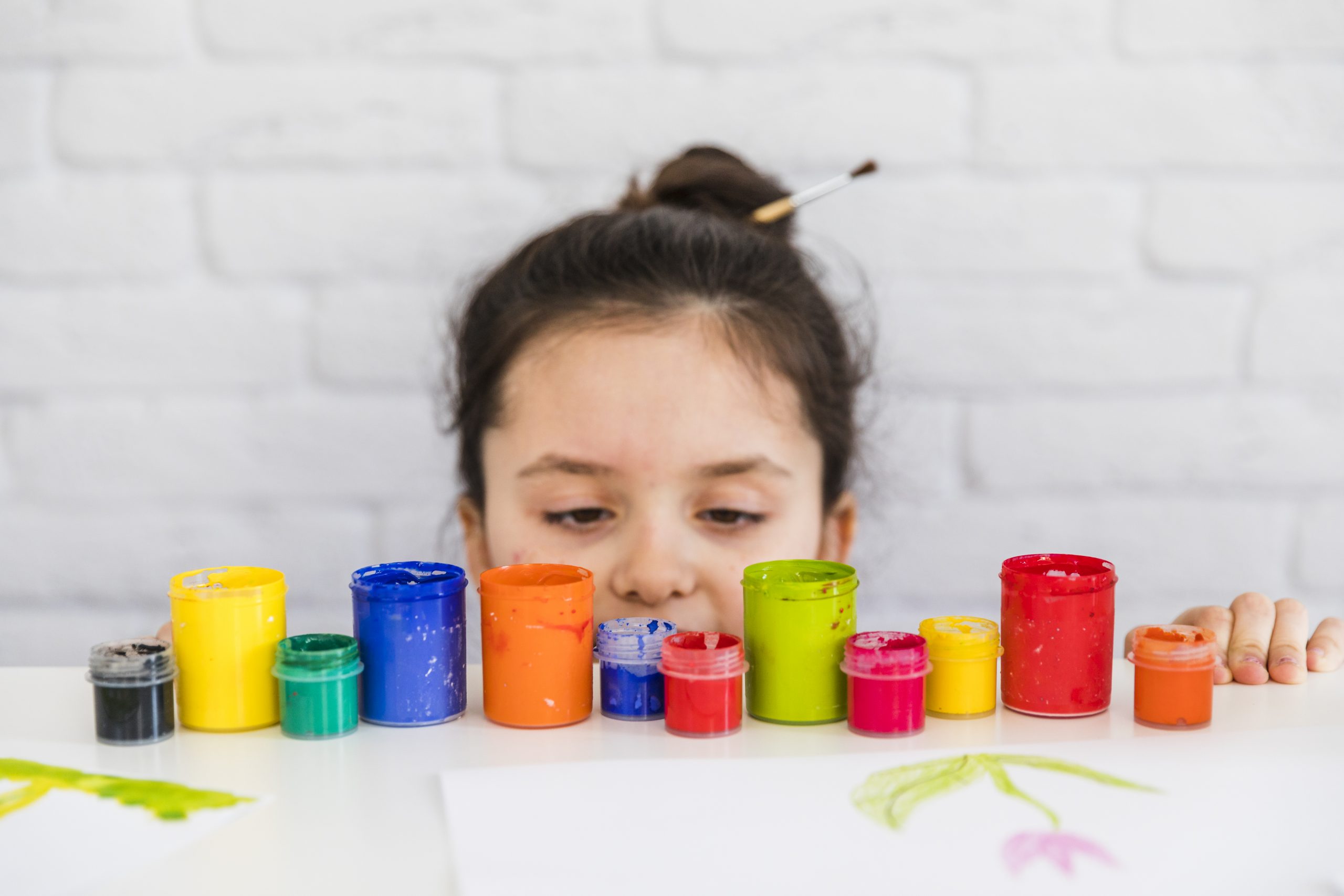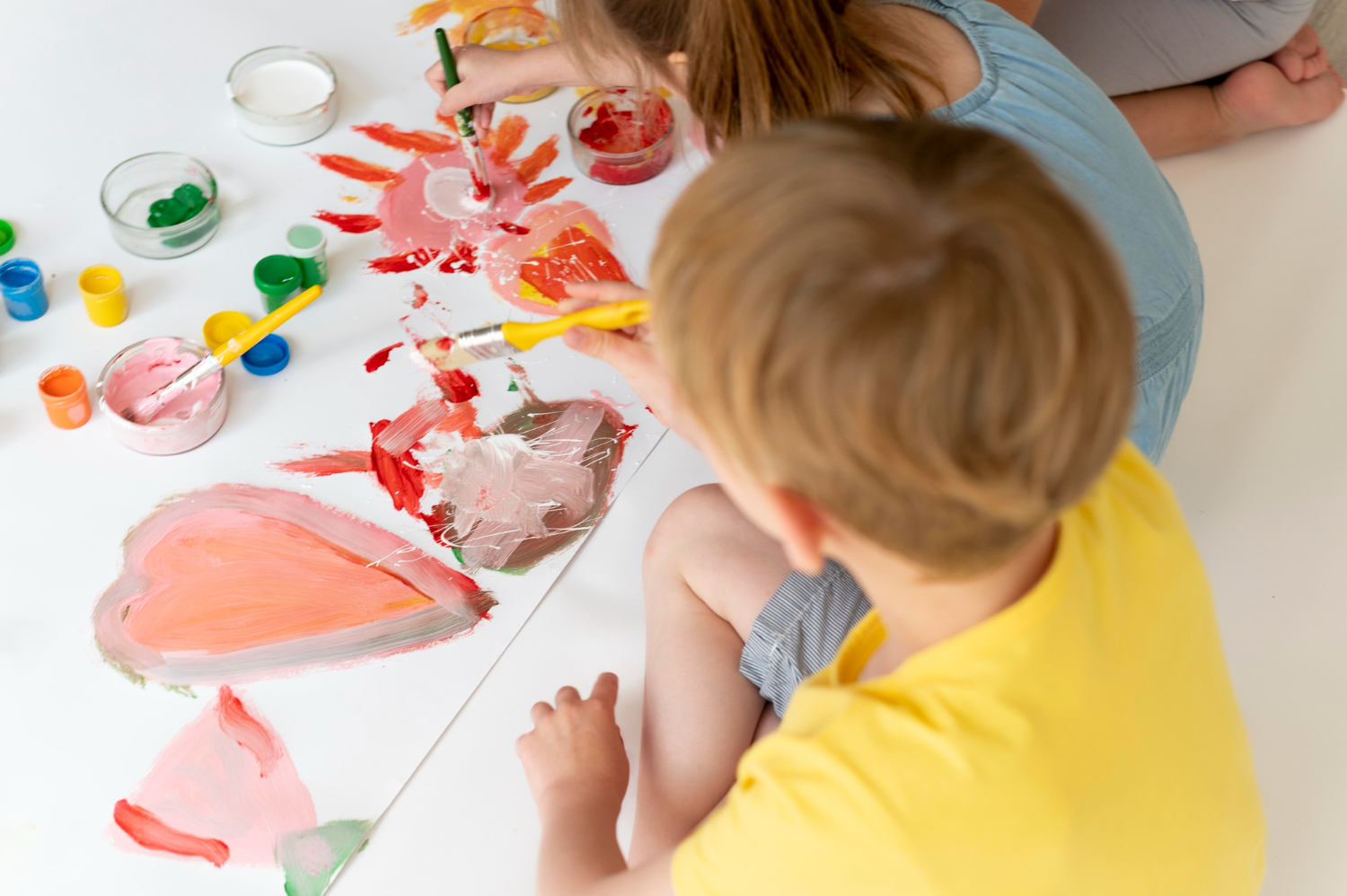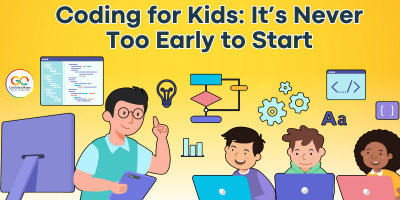Teaching kids about color theory is easy and fun! Color theory helps young students develop their artistic skills and have a better understanding of how colors interact and how to create different moods and visual effects through their choice of colors. Color is an essential concept in visual art. We can help children notice and understand different colors by teaching them color theory. Also, with a few basic concepts, kids can begin to understand how to combine colors effectively.
Color theory for kids is explained in this article, and we look at why it is a valuable skill to acquire. This is ideal for someone who wants to start a new hobby at home or for someone interested in increasing their knowledge of all things design and art. Keep reading if color theory sounds like it might be a good match for you.
What is the Color Theory For Kids?

Learn the Color Wheel
The first key concept to understand in color theory for kids is the idea of a color wheel. A color wheel consists of 12 colors: 3 primary colors (red, blue, and yellow), 3 secondary colors (the colors created when two primary colors are mixed), and 6 tertiary colors (an additional 6 colors that are created by mixing a primary and a secondary color). Knowing the colors of the wheel and how colors interact can help children understand how to create different effects in their artwork.
Using the color wheel, kids can experiment with creating shades of color by adding black and white, or tints of color by adding white. They can practice creating different kinds of color schemes, like complementary, analogous, and triadic. Complementary colors are hues that are opposite of each other on the color wheel and create visual interest when placed side by side. Analogous colors are three hues that are next to each other on the wheel. Triadic colors are three hues evenly spaced around the wheel.
Learn the Color Harmony
Harmonies are combinations of several colors that work together, like monochromatic (all one color) or analogous (the same as complementary but different). The second key concept is the idea of color harmony. Color harmony is achieved when colors that are related to each other are used in a design or artwork. There are several ways to create color harmonies, such as with complementary colors, analogous colors, or triadic colors. This concept is important since colors can affect a viewer’s reaction to the artwork, and understanding how to create harmony is an essential skill for an artist.
Read also: Block diagram of computer system
Learn the Color Value
The third key concept is color value. The color value is the lightness or darkness of a particular color, which can affect the mood of a piece of artwork. The color value can be achieved by adding black or white to a color, making it darker or lighter, respectively. Knowing how to manipulate color value gives children the ability to create more dynamic and interesting artwork.
How Colors Work Together in Visual Arts
Colors play an important role in the visual arts, and understanding how colors work together is essential for creating beautiful artwork. The principles of color theory provide a framework for how colors interact and how to use them effectively in visual art. The study of color theory includes the study of color relationships and the properties of color, such as hue, value, and saturation.
Color relationships include complementary colors, analogous colors, triadic colors, and split complementary colors. Hue is the name of a color, such as red, blue, or yellow. Value is the lightness or darkness of a color. Saturation is the intensity or dullness of a color. The principles of color theory help artists understand how colors work together and create artworks that have a cohesive and visually pleasing look.

Color Theory Project Ideas for Kids
- The Colorful Rainbow: Create a colorful rainbow using paint, crayons, markers, or colored pencils.
- Colorful Collage: Create a collage using all your favorite colors.
- Colorful Clay Art: Create a sculpture using different colors of clay.
- The Colorful Play Dough: Create a play dough sculpture using different colors of play dough.
- Colorful Sand Art: Create a sand art project using different colors of sand.
- The Colorful Fingerprint Art: Create a fingerprint art project using different colors of paint.
- Colorful Painting: Create a painting using different colors of paint.
- Colorful Slime: Create a slime sculpture using different colors of slime.
- The Colorful String Art: Create a string art project using different colors of string.
- Colorful Chalk Art: Create a chalk art project using different colors of chalk.
Color theory for kids is a great way to introduce them to the world of art. With an understanding of these core concepts, children will be able to create art with more depth, feeling, and meaning.
The principles of color theory can be used to create engaging and visually appealing artwork for kids. They can use primary and secondary colors to form their images or experiment with adding black and white to create shades and tints of the same hue. Additionally, the color wheel allows kids to learn the names of different hues, foster creativity in art-making, and strengthen their eye-hand coordination.
Conclusion,
One way to demonstrate the importance of color theory for kids is through examples of design software, like Adobe Photoshop or Illustrator. Kids can use these programs to create a simple image and experiment with the color palette, to see how different colors interact and affect the visual design.
Another way to introduce the concept to kids is to use the color wheel to explain complementary and analogous colors. Using this visual tool, kids can understand how different colors work together to create a cohesive and visually pleasing design.
Color, as you can see, is very essential not only in the world of art and design but also gives meaning to the simplest aspects of life. If reading this article has made you fall a lot more in love with color, or if you prefer an engaging method to learn about color theory, Make & Learn offers a power of color class that is jam-packed with fun activities and exercises.
As we offer online coding classes for kids, we provide multiple courses including web development, mobile, and app development, scratch programming, python, robotics program, and more. So, you can get in touch with our professional experts to book your free online demo session today!







